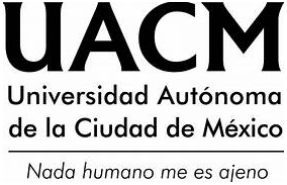Forms and Concepts of Global Urbanization for a Reading of the Latin American City
DOI:
https://doi.org/10.29092/uacm.v10i22.267Keywords:
Urban Concept, Latin America, Urban Planning, Architecture, Mexico CityAbstract
This paper explores the adoption of foreign concepts in Latin-American urban planning and Architecture. We ask about the reasons and the means in which city actors are taking and adapting those theories. Also we point main urban concepts shaping landscapes in XXI century. Mexico city brings us a good example of that process. The main conclusion is about the circulation of ideas with significant changes that allows partial new concepts emerge from the Latin-American reality.
Downloads
References
Abbagnano, N. (1992), Diccionario de filosofía [1961], trad. Alfredo N. Galletti. México: Fondo de Cultura Económica.
Castells, M. (1974), La cuestión urbana. México: Siglo XXI.
Castells, M. y P. Vélez (1971), Imperialismo y urbanización en Amércia Latina. Barcelona: Gustavo Gili.
Clark, D. (1996), Urban World / Global City. United Kingdom: Routledge.
Choay, F. (1965), L’Urbanisme Utopies et Réalités, une Anthologie. París: Éditions du Seuil.
_____ (1981), La Règle et le Modèle, sur la Théorie de l’Architecture et de l’Urbanisme. París: Éditions du Seuil.
García Vázquez, C. (2011), Antípolis: el desvanecimiento de lo urbano en el Cinturón del Sol. Barcelona: Gustavo Gili.
Gobierno del Distrito Federal (2012), La ciudad global de México. México. Obra disponible en: www.ciudadglobal.df.gob.mx, 15 de agosto de 2012.
_____ (2001), Plan general de desarrollo urbano del Distrito Federal 2001-2006. México: Secretaría de Gobierno del Distrito Federal.
_____ (2007), Plan general de desarrollo urbano del Distrito Federal 2007-2013. México. Obra disponible en www.df.gob.mx/jefatura/jefe_gobierno/programa_gral/index.html, 15 de diciembre de 2007.
Iracheta, A. (1988), Hacia una planeación urbana crítica. México: Universidad Autónoma Metropolitana.
Kowarick, L. (1979), A Espoliaçao Urbana. Río de Janeiro: Paz e Terra (Coleção Estudos Brasileiros, 44).
Lefebvre, H. (1970), La Révolution Urbaine. París: Gallimard.
Oliveira, F. (1972), “A Economia Brasileira: Crítica à Razao Dualista”. Estudos CEBRAP. E. CEBRAP. 2, pp. 3-82.
Organización para la Cooperación y el Desarrollo Económico (2004), Territorial Review: Mexico City. París: OCDE.
Paquot, Th. (2006), Terre Urbaine: Cinq Défis pour le Devenir Urbain de la Planète. París: La Découverte.
Pradilla, E. (1982), Ensayos sobre el problema de la vivienda en América Latina. México.
_____ (1984), Contribución a la crítica de la “teoría urbana”. México: Universidad Autónoma Metropolitana.
_____ (1987), Capital, estado y vivienda en América Latina. México: Fontamara.
Sassen, S. (1996), La Ville Globale: New York, Londres, Tokyo [1991], trad. Denis-Armand Sophie. Paris: Descartes et Compagnie.
Secretaría de Turismo del Distrito Federal (2004), Cuarto informe anual. México: Secretaría de Turismo del Gobierno del Distrito Federal.
Singer, P. (1971), “Urbanización, dependencia y marginalidad”, en Manuel Castells, Imperialismo y urbanización en América Latina. Barcelona: Gustavo Gili.
Söderström, O. (2012), “Des Modèles Urbains Mobiles”, en Revue Urbanisme, núm. 383. Madrid, marzo-abril, pp. 43-45.
Published
Issue
Section
License
This Journal is licensed under Creative Commons Mexico 2.5. It is allowed to reproduce and disseminate the contents of the Journal for educational or research purposes, not for profit, as long as they are not mutilated and cite the source (Andamios, Revista de Investigación Social) and the author.
The copyright of the articles published in Andamios, Revista de Investigación Social are transferred by the author(s) to Universidad Autónoma de la Ciudad de México when the originals have been accepted, so that they are published and distributed both in the printed and electronic versions of the Journal. However, as established by law, the author(s) retains their moral rights. The author(s) will receive a form of assignment of copyright that they must to sign when their original has been accepted. In the case of collective articles, the signature of one of the authors will suffice, provided that the latter has obtained the consent of the others.
Authors may use the material of their article in other works or books published by themselves, with the condition of quoting Andamios as the original source of the texts.
The articles contained in this publication are the responsibility of their authors and do not compromise the official position of Andamios, Revista de Investigación Social of the Universidad Autónoma de la Ciudad de México.


